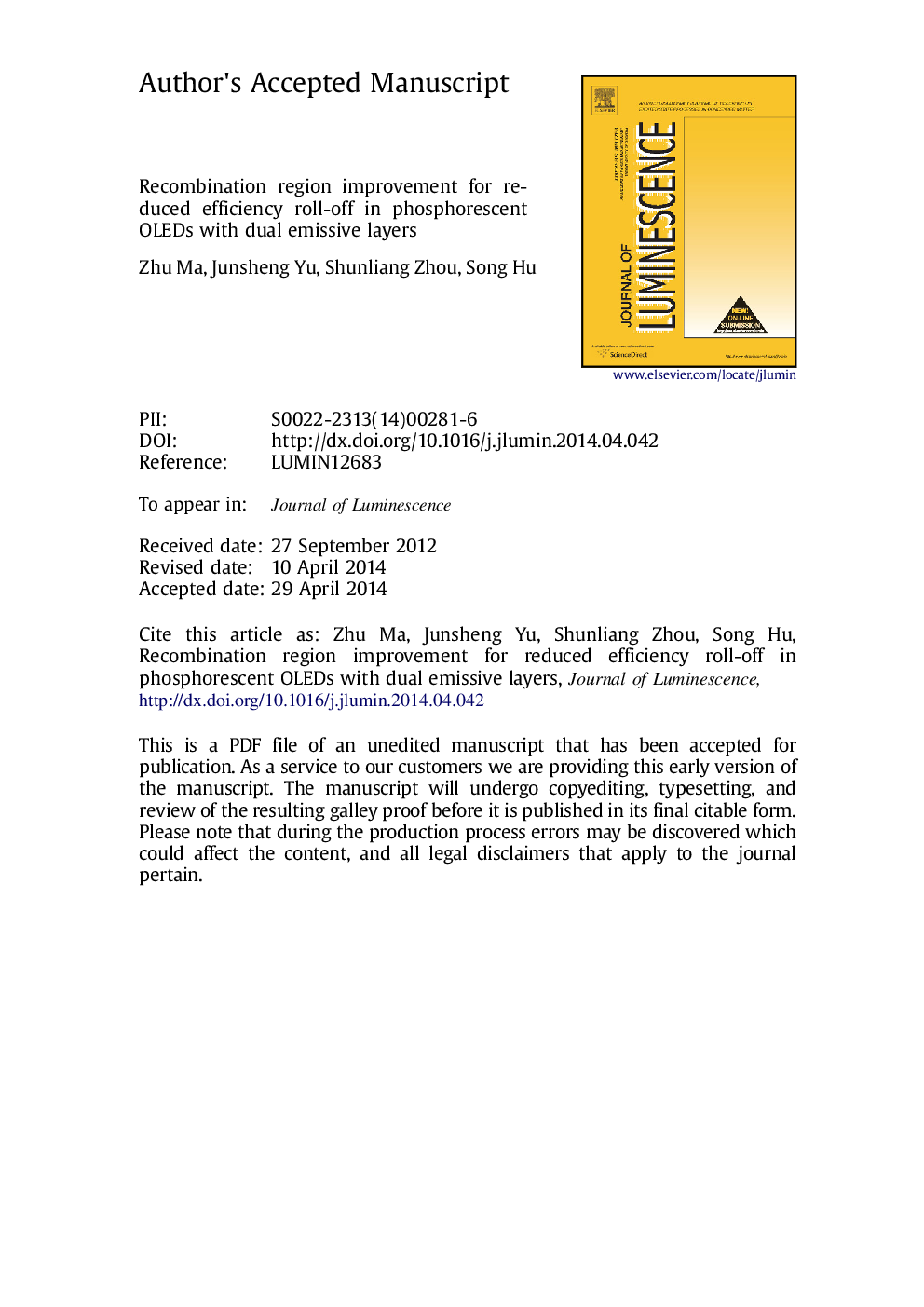| Article ID | Journal | Published Year | Pages | File Type |
|---|---|---|---|---|
| 5399791 | Journal of Luminescence | 2014 | 21 Pages |
Abstract
High-performance phosphorescent organic light-emitting diodes (PhOLEDs) by using dual-emissive-layer (DEL) structure to reduce efficiency roll-off were fabricated. The DEL was comprised of a hole-transport-type host of N, Nâ²-bis(naphthalen-1-yl)-N, Nâ²-bis(phenyl)-benzidine (NPB) and a bipolar host of 4,4â²-bis(carbazol-9-yl)biphenyl (CBP), which were both doped with an orange phosphorescent dopant of bis[2-(4-tert-butylphenyl)-benzothiazolato-N,C2â²]iridium (acetylacetonate) [(t-bt)2Ir(acac)]. After the optimization of doping concentration of the first emissive layer (FEL), the device with DEL exhibited 11% lower roll-off power efficiency than single emissive layer devices (SED) when the luminance increased from 1000Â cd/m2 to 10,000Â cd/m2. The hole-electron recombination zone in DEL was illuminated by inserting an ultrathin fluorescent probe of 4-(dicyanomethylene)-2-tert-butyl-6 (1,1,7,7-tetramethyljulolidin-4-yl-vinyl)-4H-pyran (DCJTB) in different emissive regions. The performance improvement was attributed to the optimization of energy barrier and the expansion of exciton formation zone within the DEL.
Related Topics
Physical Sciences and Engineering
Chemistry
Physical and Theoretical Chemistry
Authors
Zhu Ma, Shunliang Zhou, Song Hu, Junsheng Yu,
